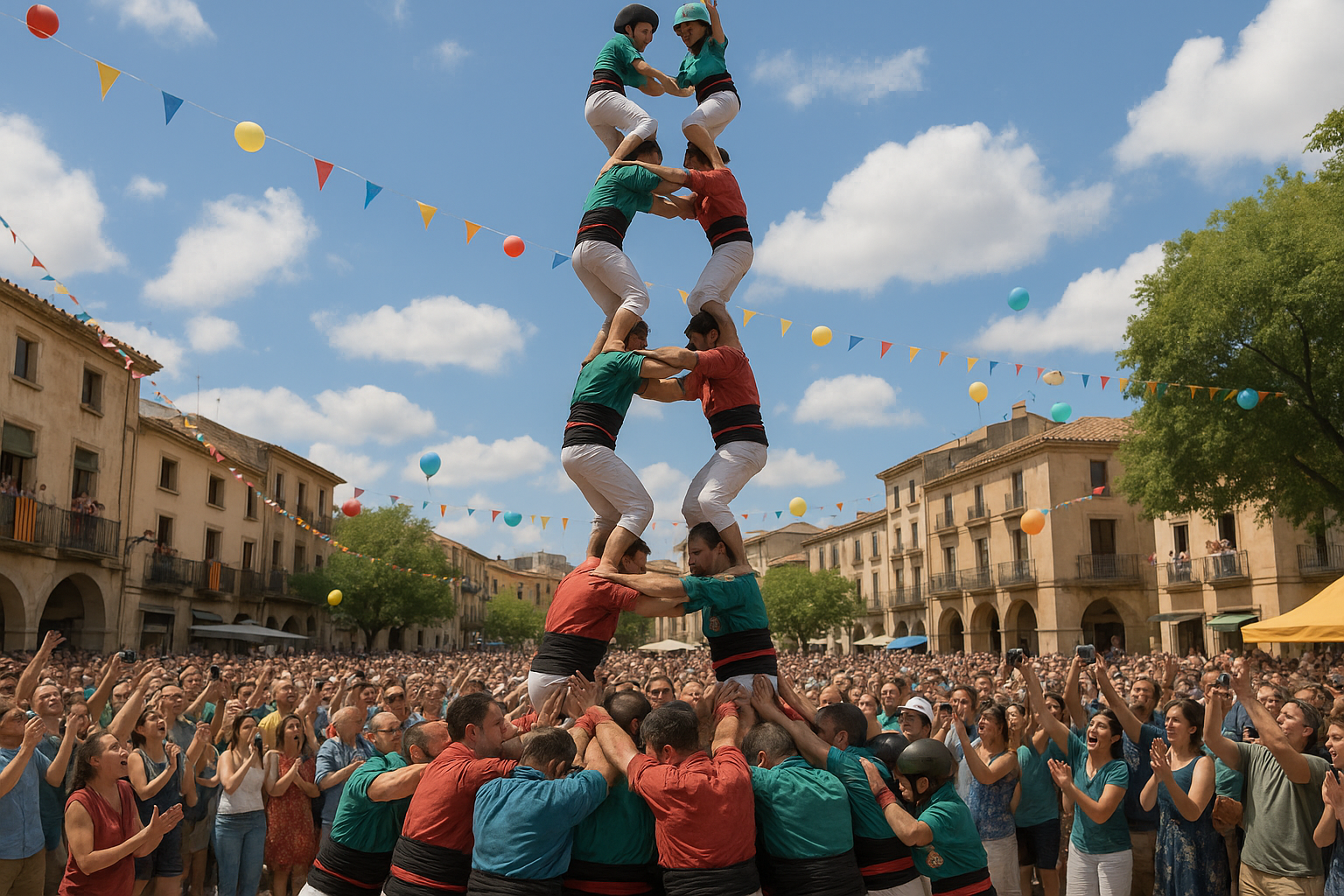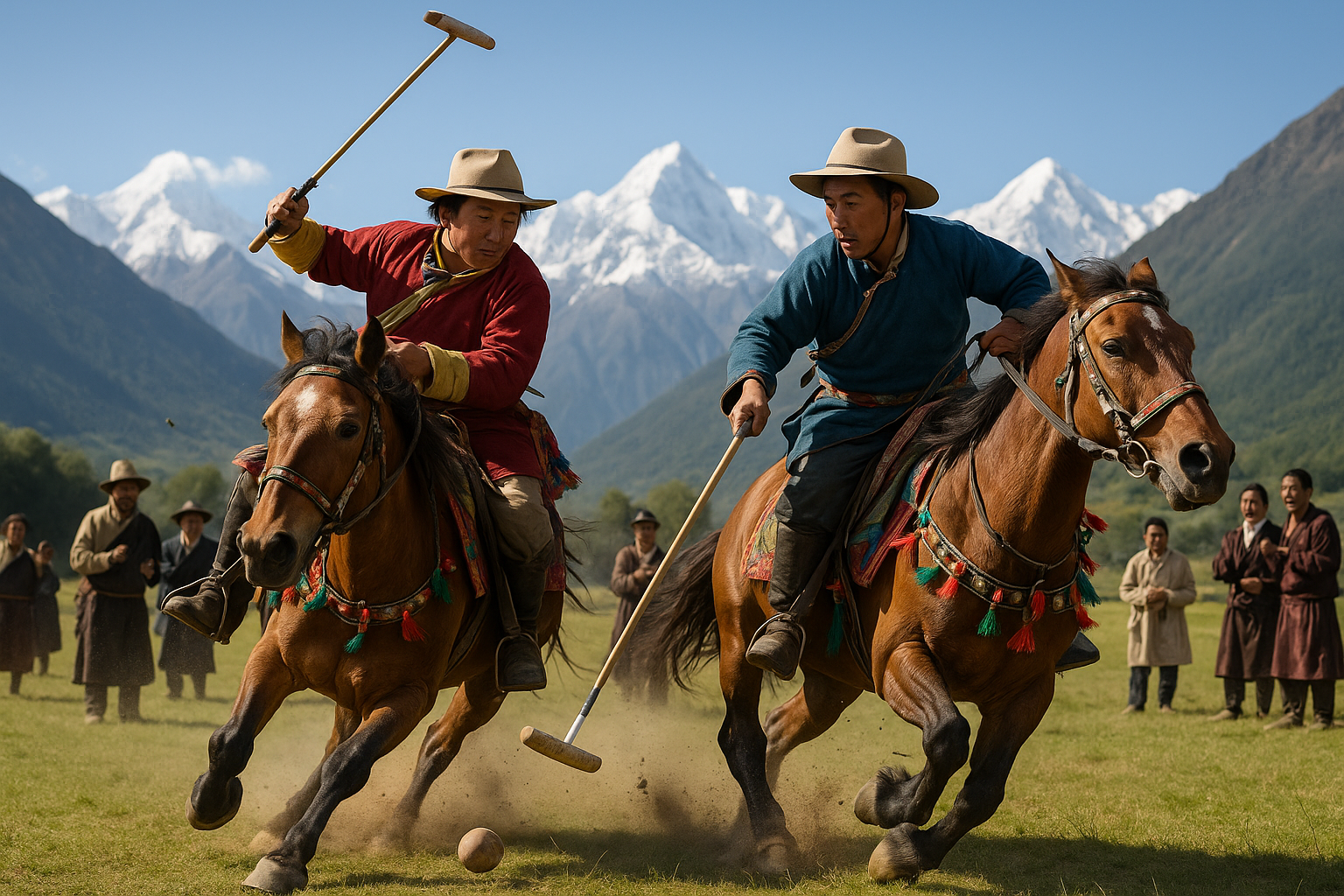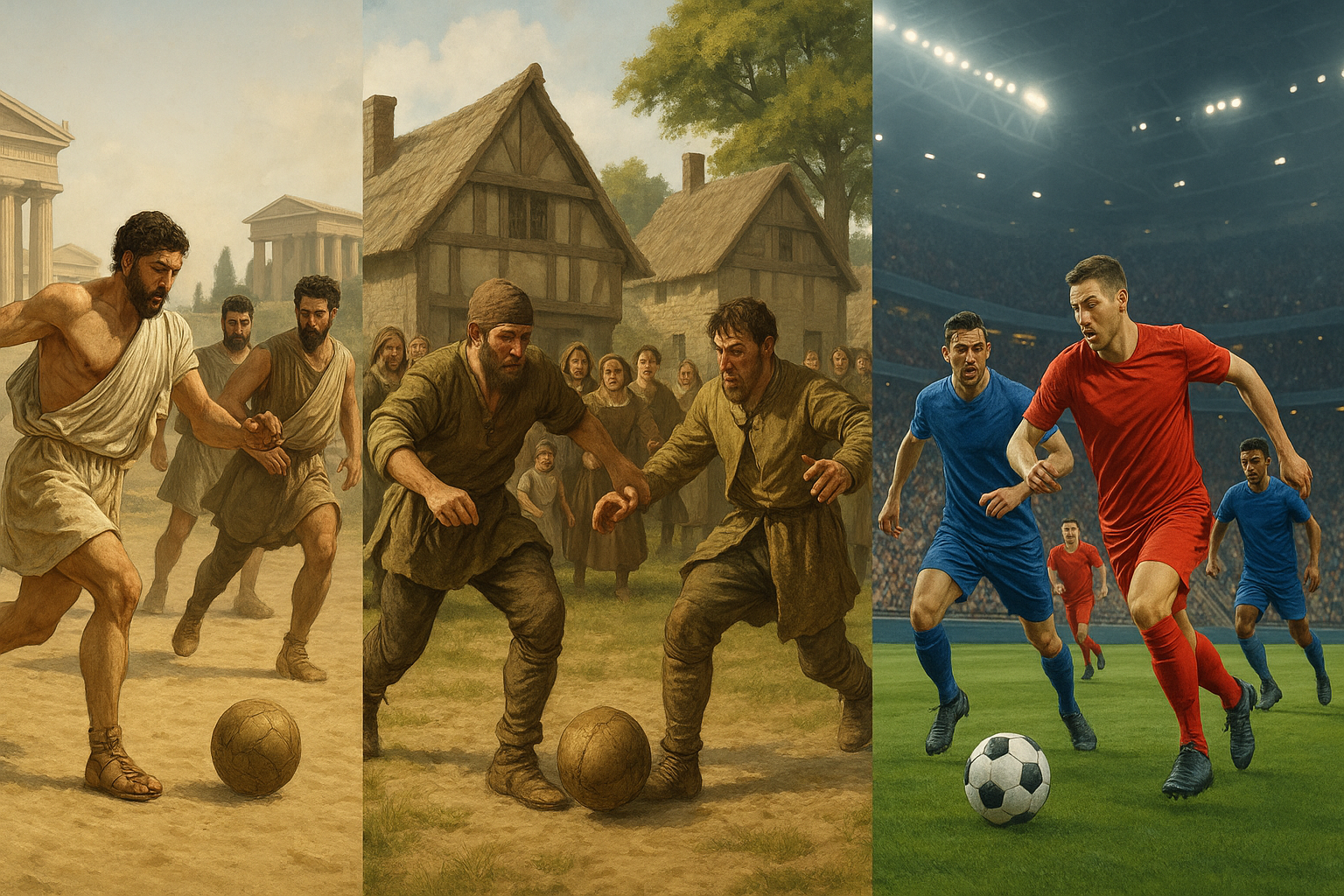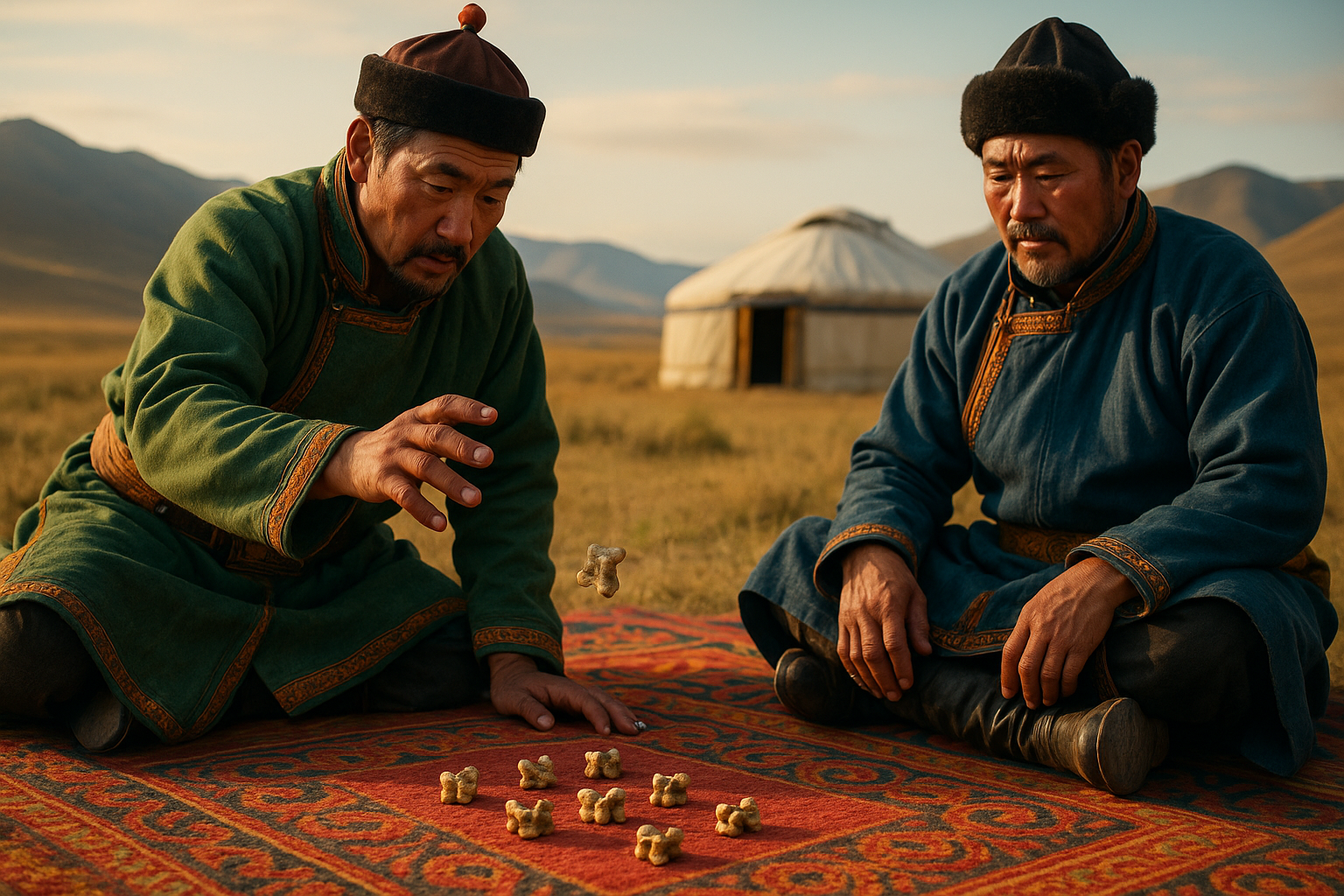In a world brimming with adrenaline-pumping sports and heart-stopping feats, few spectacles capture the imagination quite like the exhilarating tradition of human tower competitions. These awe-inspiring events, deeply rooted in cultural heritage, transform the seemingly impossible into a breathtaking reality. Across bustling plazas and sun-drenched streets, teams of spirited individuals come together to form intricate human towers, reaching for the sky with unwavering determination and a sense of unity that transcends words. 🌟
The art of building human towers, known as “castells” in Catalonia, Spain, dates back to the 18th century, serving as a vibrant symbol of community strength and resilience. Today, this tradition has spread far beyond its Mediterranean origins, captivating audiences worldwide with its mesmerizing blend of skill, balance, and teamwork. But what exactly makes these competitions so enthralling? What drives participants to push the boundaries of human potential, balancing precariously on each other’s shoulders in a choreographed dance against gravity?
In this comprehensive exploration of the world of human tower competitions, we’ll delve into the rich history and cultural significance that underpin this extraordinary activity. We’ll uncover the meticulous preparation and rigorous training required to safely construct these towering edifices, often reaching dizzying heights of up to ten levels. The role of trust and communication among team members, or “castellers,” is crucial, as is the mental fortitude needed to conquer both physical and psychological challenges.
Human tower competitions are not merely about physical prowess; they are a testament to the power of collective effort and shared purpose. In an age where individual achievement often takes center stage, the world of castells stands as a poignant reminder of the magic that can unfold when people come together with a common goal. The sight of a successful tower rising, layer by layer, is nothing short of poetic—a living testament to human ingenuity and tenacity. 🏆
But it’s not all about tradition and teamwork. The thrill of competition adds an electrifying dimension to these events. As teams vie for the top spot, they must not only perfect their formations but also demonstrate creativity and strategic thinking. The intricate choreography involved in assembling and disassembling a tower within a matter of minutes requires precision, agility, and a deep understanding of physics. Each competition is a delicate balancing act, where the slightest misstep can lead to a dramatic collapse, and victory is often determined by mere fractions of a second.
Throughout this article, we’ll journey through the most iconic human tower competitions around the globe, from the bustling streets of Tarragona to the vibrant plazas of Mumbai. We’ll highlight the role of festivals and community events in preserving this heritage, as well as the modern adaptations that continue to push the boundaries of what’s possible. We’ll also meet some of the passionate individuals behind these breathtaking performances, gaining insight into their motivations, challenges, and triumphs.
Moreover, we’ll examine the increasing international interest in human tower building and the burgeoning global community of enthusiasts. From local clubs in small towns to international events drawing spectators from all corners of the globe, the fascination with human towers shows no signs of waning. 🌍 We’ll explore how this growing interest is fostering cross-cultural exchanges and inspiring new generations to embrace this ancient art form.
As we reach new heights in our understanding of this thrilling world, prepare to be captivated by the stories, the spirit, and the sheer spectacle of human tower competitions. Whether you’re a seasoned aficionado or a curious newcomer, this exploration promises to offer a fresh perspective on an age-old tradition that continues to defy the limits of human capability.
Get ready to be inspired by tales of perseverance, creativity, and unity that lie at the heart of every towering achievement. From the carefully coordinated base to the fearless climbers who crown the structure, each component of a human tower is a testament to the extraordinary things we can achieve when we come together. So, as we embark on this journey into the thrilling world of human tower competitions, let’s celebrate the indomitable spirit of human collaboration and the enduring legacy of this remarkable tradition. 🎉

Conclusion
As we conclude our exploration of human tower building, it’s clear that this breathtaking tradition is a true celebration of teamwork, courage, and balance. Whether performed in Catalonia’s castells or mirrored in similar cultural practices worldwide, human towers symbolize unity — every participant relying on strength, trust, and synchronization to reach new heights.
The true thrill of scaling human towers lies in harmony and collective will. 🌿💫 Each tier represents not only physical endurance but also shared purpose — a living metaphor for cooperation and resilience. Ultimately, the art of human tower building is more than a display of daring — it’s a timeless reminder that when individuals rise together, they elevate not just bodies, but spirit, community, and the human experience itself.
Toni Santos is a cultural revivalist, play historian, and kinetic storyteller who travels time through the games we left behind. With a deep reverence for lost pastimes, Toni excavates forgotten sports, ancestral competitions, and community games that once defined how people moved, bonded, and thrived. From ancient Mesoamerican ball courts to medieval street games, nomadic strategy contests, and pre-colonial ritual play, Toni revives rulebooks that were never digitized—and champions a worldview where games weren’t just leisure, but meaning, skill, and survival. Combining ethnography, movement studies, game design, and oral tradition, he reconstructs games piece by piece, consulting archives, elders, and fragments of folklore. His mission is not only to replay the past, but to inspire new generations to rediscover joy in rules that challenge, unite, and reflect forgotten values. At the helm of Vizovex, Toni documents these rediscoveries with playable guides, interactive reconstructions, motion-capture reenactments, and interviews with guardians of ancient play. His platform speaks to: Experimental game designers and kinetic anthropologists Educators looking to decolonize sports curriculums Movement artists and cultural preservationists Playful minds seeking what we once valued in the games we played Whether it’s reimagining a Viking endurance sport, mapping traditional Māori games, or crafting tournaments for extinct athletic rites, Toni urges us to move like our ancestors once did—and play with purpose again.




